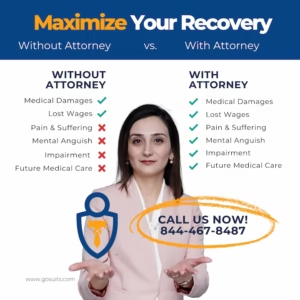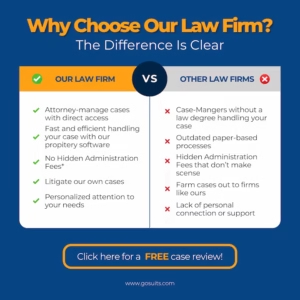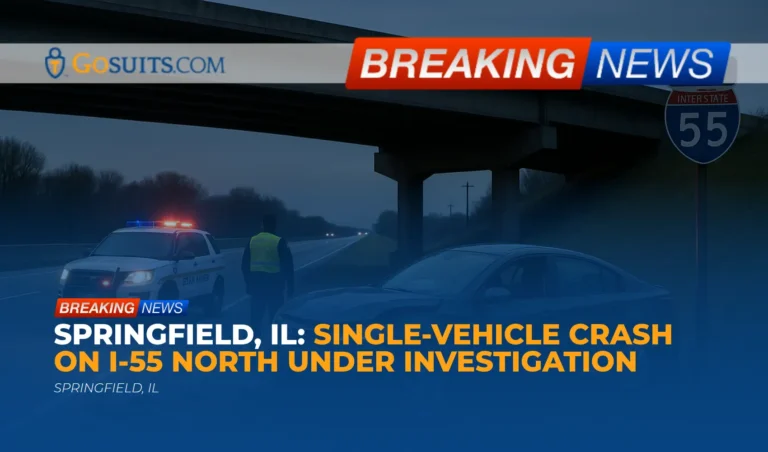A single-vehicle crash occurred on Interstate 55 northbound near milepost 94 in Springfield, Sangamon County, Illinois, on Wednesday at approximately 5:32 a.m. Illinois State Police Troop 6 is currently investigating the incident. Preliminary reports indicate that the crash resulted in property damage. Fortunately, no injuries have been reported at the scene.
Details of the Incident
According to initial information released by the Illinois State Police, the crash involved a single vehicle. The circumstances leading up to the crash are still under investigation. Law enforcement officials are working to determine the cause of the accident, which may involve factors such as driver error, road conditions, or vehicle malfunction.
The location of the crash, on I-55 northbound near milepost 94, is a frequently traveled stretch of highway in the Springfield area. The incident occurred during the early morning hours, a time when visibility may be reduced due to darkness or weather conditions. While no injuries have been reported, crashes of this nature can still pose significant risks and require thorough investigation.
Legal Implications of Single-Vehicle Accidents
While this particular incident thankfully did not result in any reported injuries, single-vehicle accidents can sometimes lead to serious harm. Understanding the potential legal implications of such accidents is crucial for anyone involved.
In many single-vehicle accidents, the driver is often considered at fault. This can be due to factors such as distracted driving, speeding, driving under the influence, or general negligence. However, there are also situations where other factors contribute to or directly cause a single-vehicle crash. These factors may give rise to a personal injury claim against a third party, even when only one vehicle is involved.
Potential Causes and Liability in Single-Vehicle Accidents
Several factors beyond driver error can contribute to single-vehicle accidents, and these factors can sometimes lead to legal claims:
- Road Defects: Poorly maintained roads, including potholes, uneven surfaces, inadequate signage, or hazardous construction zones, can cause a driver to lose control of their vehicle. In such cases, the government entity responsible for maintaining the road may be liable for damages. Proving liability in these cases often requires demonstrating that the road defect was a known hazard and that the responsible entity failed to take appropriate action to correct it.
- Defective Vehicle Parts: A mechanical failure, such as a tire blowout, brake failure, or steering system malfunction, can cause an accident. If the failure is due to a manufacturing defect or a design flaw, the vehicle manufacturer or parts supplier may be held liable. These cases often involve complex investigations and may require seasoned professionals to analyze the vehicle and its components.
- Obstructions in the Roadway: Debris, animals, or other obstructions in the road can cause a driver to swerve or lose control of their vehicle. If the obstruction was caused by a third party’s negligence (for example, a truck losing part of its load), that party may be held liable for the resulting damages.
- Weather Conditions: While inclement weather itself is not typically grounds for a lawsuit, the actions (or inactions) of others during adverse weather conditions can be. For example, if a commercial truck driver fails to adjust their driving to account for heavy rain, they may be considered negligent if they cause an accident.

Insurance Implications
Even when only one vehicle is involved, there are insurance implications to consider. If the driver is at fault, their insurance policy will typically cover the damages to their vehicle, subject to deductible and policy limits. However, if another party is responsible for the accident, the injured party may be able to file a claim against that party’s insurance.
Uninsured or underinsured motorist coverage may also come into play in certain single-vehicle accident scenarios. For example, if a driver is forced off the road by an unidentified hit-and-run driver, their uninsured motorist coverage may help cover their damages.
Documenting the Scene and Evidence
In any accident, and especially in single-vehicle crashes where the cause may not be immediately apparent, it is crucial to document the scene thoroughly. This includes taking photographs of the vehicle damage, the road conditions, any obstructions, and the surrounding area. Obtaining a police report is also essential, as it will contain the investigating officer’s findings and observations.
If a mechanical defect is suspected, it is important to preserve the vehicle in its post-accident condition, as possible. This will allow skilled professionals to conduct a thorough inspection and determine whether a defect contributed to the crash.
Importance of Legal Consultation
Determining fault and liability in single-vehicle accidents can be complex. Consulting with a seasoned personal injury attorney can help victims understand their rights and explore all potential avenues for compensation. An attorney can investigate the accident, gather evidence, and negotiate with insurance companies to ensure that their client receives a fair settlement.
This article provides a general overview of the legal implications of single-vehicle accidents and should not be considered legal advice. Anyone involved in a car accident should consult with a personal injury attorney to discuss their specific circumstances.

Commentary from Gosuits Sangamon County, Illinois Personal Injury Attorney
Single-vehicle accidents, while sometimes seemingly straightforward, can involve a multitude of contributing factors that aren’t immediately obvious. Even when no other vehicles are involved, the potential for significant injury and property damage remains high. What’s crucial to understand is that fault doesn’t always rest solely with the driver. Road conditions, vehicle defects, or the actions of other parties can play a significant role in these incidents.
A skilled investigation is often necessary to uncover all the contributing factors and determine potential liability. This might involve reviewing police reports, interviewing witnesses, inspecting the vehicle, and analyzing road conditions. For example, a seemingly simple crash might reveal a latent defect in the vehicle’s braking system, making the manufacturer potentially liable. Alternatively, a poorly maintained roadway with hazardous conditions could point to negligence on the part of the responsible government entity.
It’s important for anyone involved in a single-vehicle accident to seek legal counsel to explore their options. An experienced personal injury attorney can assess the circumstances, advise on the best course of action, and advocate for their client’s rights to ensure they receive the compensation they deserve. Seeking legal assistance is not about placing blame but about understanding the complete picture and ensuring that victims receive fair treatment.






